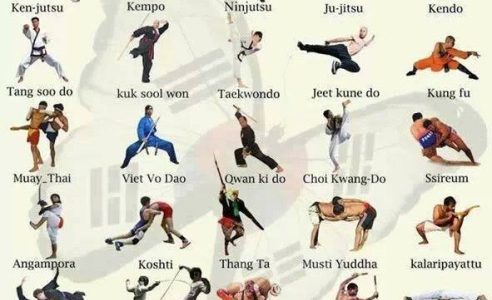The Advancement And Historic Importance Of Martial Arts Throughout Various Cultures
The Advancement And Historic Importance Of Martial Arts Throughout Various Cultures
Blog Article
Personnel Writer-Wilcox Silverman
Martial arts have a fascinating background that covers centuries and continents. You could locate it fascinating how ancient practices like Shuai Jiao and Kalaripayattu laid the groundwork for modern-day battle strategies. These techniques not just highlight physical abilities however also reflect the cultures that birthed them. As you discover their development, take into consideration how globalization has changed these conventional forms right into hybrid styles. What impacts do you assume have formed today's martial arts landscape?
Ancient Martial arts: The Structures of Combat
As you look into the world of old martial arts, you'll discover the rich foundations that shaped combat strategies throughout cultures. Very early practices focused on Self-Defense and survival, often integrating strikes, grappling, and weaponry.
In old China, for instance, methods like Shuai Jiao emphasized throws and joint locks, while India's Kalaripayattu showcased agility and fluid motion. Japanese samurai established Kenjutsu, a polished swordsmanship that highlighted discipline and approach.
These martial arts served not just for battle however also as a way of individual advancement, instilling worths like respect and perseverance. The mixing of these methods gradually laid the groundwork for the varied martial arts you see today, each showing the one-of-a-kind philosophies and demands of its culture.
The Cultural Impact on Martial Arts Development
While martial arts typically reflect the useful demands of a society, they also embody the cultural values and beliefs of their origins. When chinese martial arts styles explore different martial arts, you'll discover exactly how they're affected by religious beliefs, approach, and social norms.
For visit this link , the emphasis on regard and technique in Japanese martial arts originates from Zen Buddhism and samurai society. On the other hand, Brazilian Jiu-Jitsu advertises flexibility and method, formed by the demand for effectiveness in a diverse, modern environment.
You may discover that the routines, attires, and training techniques show a neighborhood's history and identity. By recognizing these cultural influences, you deepen your recognition of martial arts and their role in shaping human experiences across the globe.
Modern Adaptations and the Globalization of Martial arts
Martial arts have actually transformed significantly in recent years, adapting to contemporary culture and worldwide influences. You'll notice that traditional types have combined with modern strategies, developing hybrid styles like mixed martial arts. These adaptations deal with diverse audiences, making martial arts obtainable and attractive worldwide.
With the increase of social networks and electronic systems, you can discover tutorials and competitions from all corners of the globe, breaking geographical barriers. This globalization has caused a common appreciation for numerous self-controls, from Brazilian Jiu-Jitsu to Taekwondo.
As you engage with these arts, you'll recognize they're not just about combat; they advertise fitness, self-control, and psychological well-being.
Eventually, modern adaptations have actually enhanced the martial arts landscape, making it a vibrant and advancing practice.
Final thought
In checking out the background and evolution of martial arts, you reveal a remarkable mix of techniques, societies, and ideologies. From ancient techniques like Shuai Jiao and Kalaripayattu to the contemporary flexibility seen in MMA, martial arts reflect mankind's mission for Self-Defense and individual development. As you involve with these methods, you not only acquire skills but additionally a much deeper admiration for the diverse customs that shape our world today. So, continue your journey and embrace the art of combat!
